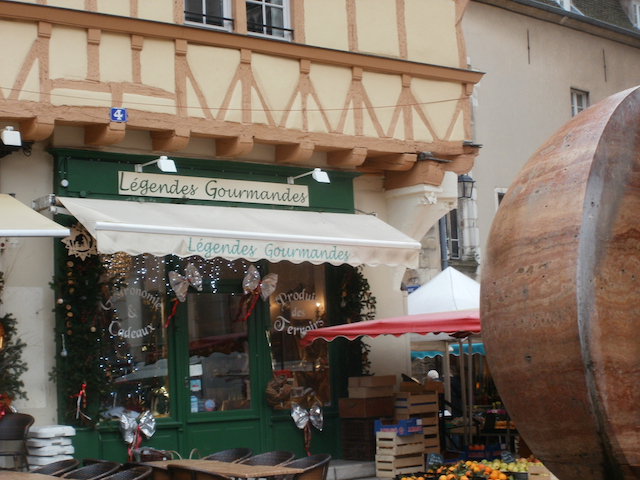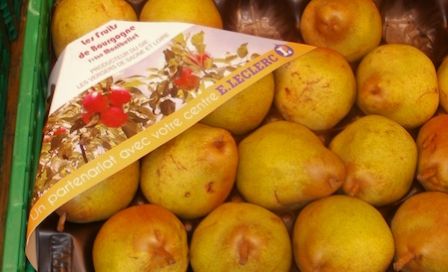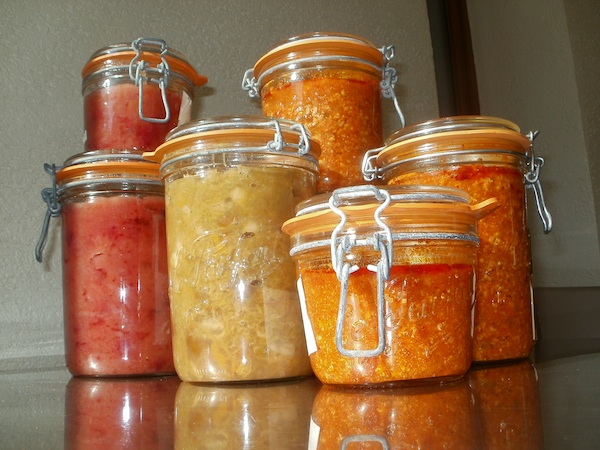
Summer brings a bumper crop of fruit and vegetables in your garden or at tempting prices in the farmer's market. Alas my freezer is full of hot pockets and chili poppers (just kidding). Let's harken back to simpler times and a much more environmentally friendly food storage technique: canning, a FRENCH invention.
Nicolas Appert, a candymaker and chef living in the Champagne region began experimenting in 1795 to develop a food preservation method in response to a competition launched by Napoleon, who was seeking better ways to feed his soldiers. He perfected a technique using glass jars sealed and heated in boiling water, and won the cash prize of 12,000 francs. By 1820, he was running a small company to market canned milk, peas and other canned goods. Later in his life, Appert worked on a rudimentary pressure cooker dedicated to canning in order to improve sterilization efficiency and safety.
Pressure cookers are also a FRENCH invention, dating prior to canning AND pasteurization. In 1679 Denis Papin perfected the first pressure cooker used for food, but it wasn't until the late 1920's they were made safe enough for home use. Even then, terrible accidents made them unreliable. After WWII in France, several companies began manufacturing different styles of pressure cookers, none of which were entirely dependable. SEB company in Dijon, Burgundy, "Société d'Emboutissage de Bourgogne" was an industrial sheet metal stamping factory equipped with ultra-modern German machinery. In 1953 SEB launched a "super cocotte" pressure cooker and pulverized the competition with its superior design and safety. SEB has emerged as the world leader in home small appliances and cookware, gobbling up Tefal, Moulinex, Calor, Rowenta, Krups, All-Clad and Lagostina. The world headquarters are now located in Lyon, and SEB is a household name in France.
Canning always makes me think of my grandmother's cellar under her circa 1930's bungalow back in New Auburn, Wisconsin. The basement smelled of clean dirt and damp, and was dimly lit with a single bulb close to the stairs. A few ground level glass blocks trickled light, but not enough to make the basement kid-friendly. It was a shadowy, frightening space. The ancient furnace hulked in one corner like a massive dragon and a crawlspace under the front porch made it seem as if the basement continued infinitely on into a dark realm where orcs, goblins and giant spiders dwelt.
A shelf near the staircase held a treasure chest stocked with bright jewels: purple beets, green beans, yellow pears and golden peaches, green apple-rhubarb sauce, scarlet strawberry jam and orange mashed pumpkin. A rainbow trove of garden goodness; a bastion against nuclear attack, war and economic upheaval. Canned goods in my Grandmother's basement represented both frugality and comfort.
Since the dark shadow of botulism hovers over every home canning project, a minimum amount of care is required . Avoiding botulism involves three points: 1) hygiene: cleanliness of jars, the environment and the food 2) Acidity: adding lemon/vinegar to create an acidic environment that clostridium botulinum bacteria do not like and 3) Temperature: use a pressure cooker if you can and follow instructions precisely and recommended cooking times.
Last week I made home-canned spaghetti sauce and fruit compotes for our Rollerblading club's GROL race marathon team. We will be camping in Brittany for the race, and there's something luxurious about opening home-canned food when you're on a camping trip. I would be comfortable camping with Alain Senderens and serving him my home-canned food. I'm not sure he'd be comfortable with my American mannerisms and taste for Linkin Park. Perhaps it would expand his horizons? We could listen to Daft Punk together and discuss the hallowed history of electronic music.
My SEB brand French pressure cooker has a fixed pressure valve operating about 80kPa or 16 pounds. Water boils at 120 degrees Celsius (248 F) at this pressure. The higher temperature guarantees complete destruction of pathogens, including the bacteria causing botulism. My SEB cooker manual recommends sterilizing jars of meat sauce for 60 minutes and fruit sauces for 20 minutes. The time is counted when the little steam valve starts to turn and whistle, signaling that the pressure has been reached. I have had this pressure cooker for twenty years now, and it's a faithful friend.
I recently invested in a meat grinder attachment for my Kenwood Major because ground turkey is unavailable in France. I have developed a borderline unhealthy attachment to this appliance. Every accessory I buy makes me feel vaguely uncomfortable, like I'm keeping a concubine. The meat grinder works wonderfully, much easier and faster than my old cast-iron hand-crank model.
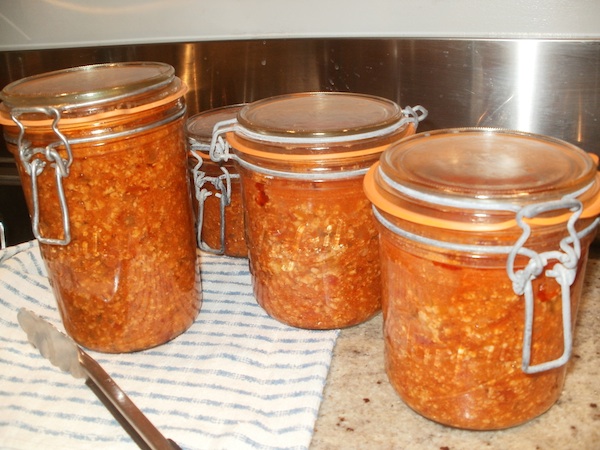
Marathon Turkey Bolognaise Sauce - serve over Barilla Bucatini number 9
Ingredients:
3 lbs turkey breast, ground fine
1/4 cup duck fat OR olive oil
4 medium onions, minced
6 carrots, minced
6 stalks of celery, minced
8 sun dried tomatoes packed in oil, minced
4 cloves fresh garlic
bay leaf
1 liter homemade poultry stock*
1 cup tomato paste
1 lb can chopped plum tomatoes
2 cups whole milk
salt and pepper
Instructions:
Warning: this takes 4 hours to make. If you're canning the sauce afterwards, it's an all-day project.
Mince the onions and garlic. Heat the oil in a large saucepan or pot. Add onions and garlic and cook over low heat for ten minutes until soft and translucent. Add minced carrots and celery and continue cooking slowly another 20 minutes or so. Add the ground turkey and cook, stirring to break up the chunks of meat.
Add the tomato paste, tomatoes, stock and bay leaf. Maintain at the simmer, covered and stiring occasionally for 3-4 hours. It should develop the consistency of thick soup. Add a 1/4 cup of whole milk to the sauce every hour. When it has simmered for at least 3 hours, taste and adjust for salt and pepper. Add milk if it's too thick, and more tomato paste if it's too thin.
*Since I ground my own turkey, I used all the leftover scraps and meat stuck to the grinder to make a homemade poultry stock. I added carrot, onion, parsely, thyme, celery and fennel leaves in the stock water to make it extra aromatic, as well as some mushroom trimmings. (I keep little bags of tidbits in the freezer for making stock).
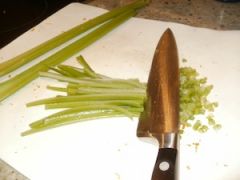
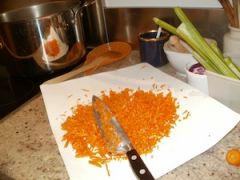
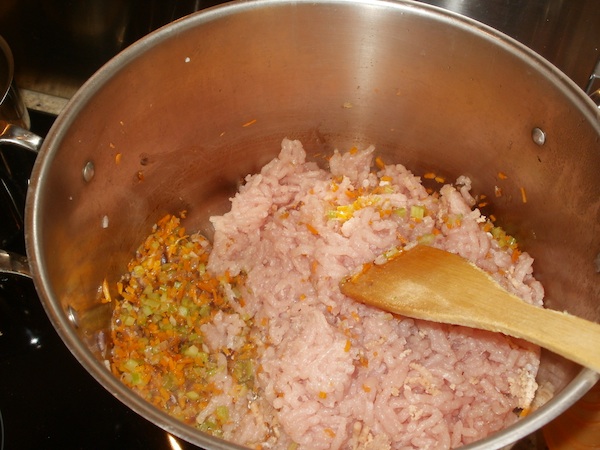
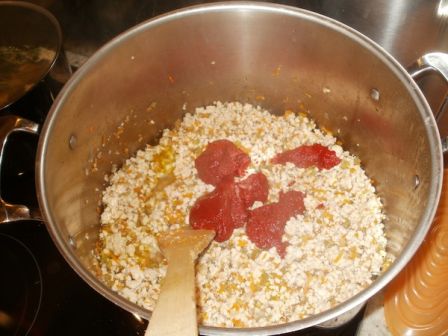


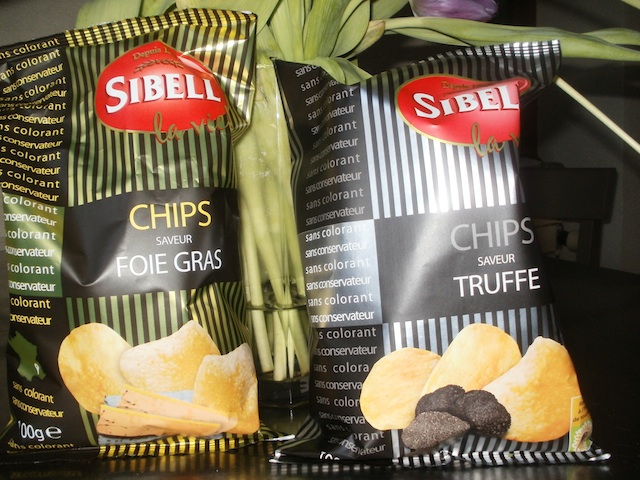
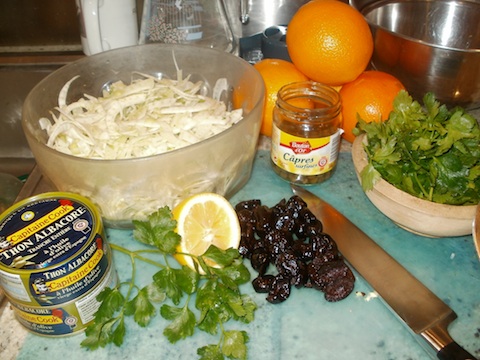
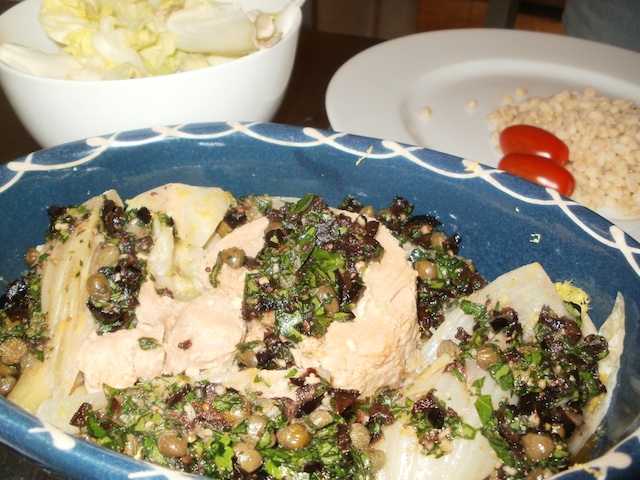

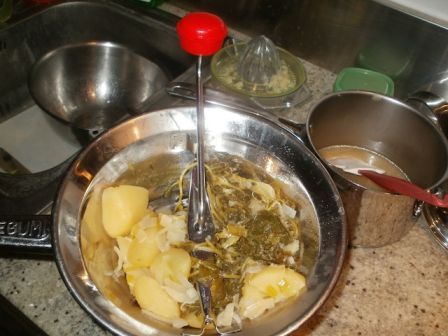
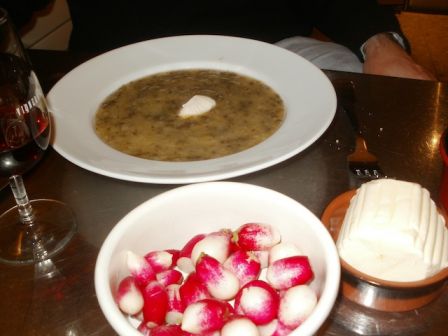
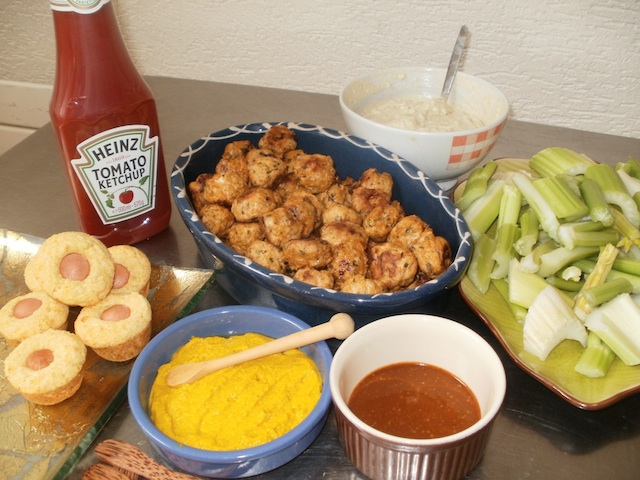 I recently hosted a dinner party for four Franco-American couples living in Chalon-sur-Saone. I wanted to get us all together to speak Franglais, our secret language. It's like pig latin only instead of inserting "ay" on the end of words, you randomly substitute French when you can't remember the English word, making the conversation impossible for bystanders to follow, and quite confusing for ourselves.
I recently hosted a dinner party for four Franco-American couples living in Chalon-sur-Saone. I wanted to get us all together to speak Franglais, our secret language. It's like pig latin only instead of inserting "ay" on the end of words, you randomly substitute French when you can't remember the English word, making the conversation impossible for bystanders to follow, and quite confusing for ourselves.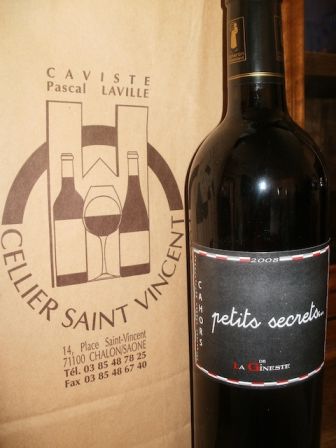
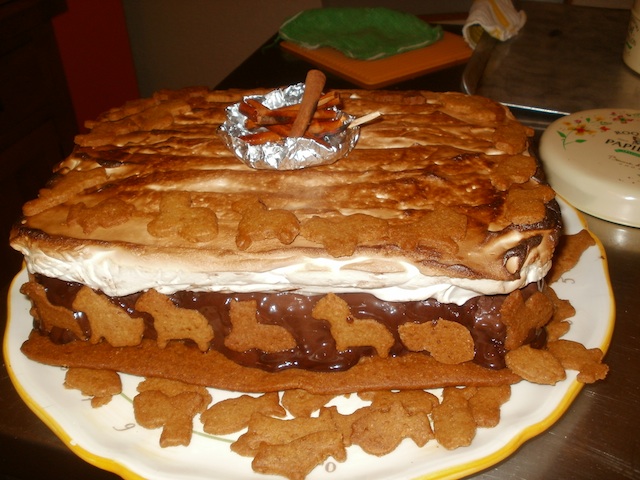 There were cries of delight when I brought my "Faux-Oreos" cookies to the table at the end of the meal.
There were cries of delight when I brought my "Faux-Oreos" cookies to the table at the end of the meal.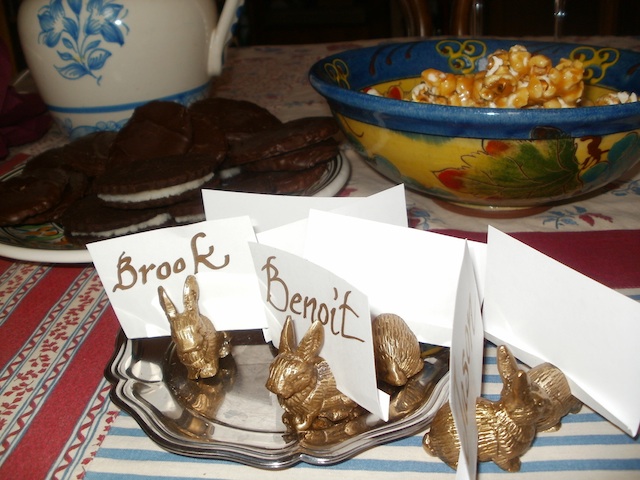
 Here's the menu that my American friends loved and the French didn't hate:
Here's the menu that my American friends loved and the French didn't hate: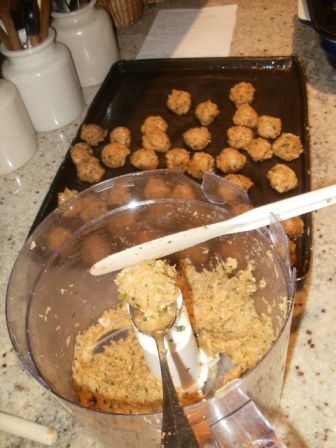
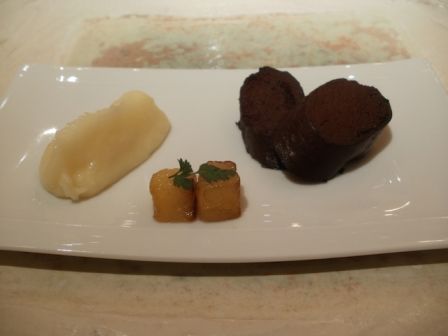 Traditional. A mise en bouche of sliced black pudding with caramelized apple cubes and a tiny cloud of mashed potatoes.
Traditional. A mise en bouche of sliced black pudding with caramelized apple cubes and a tiny cloud of mashed potatoes. 
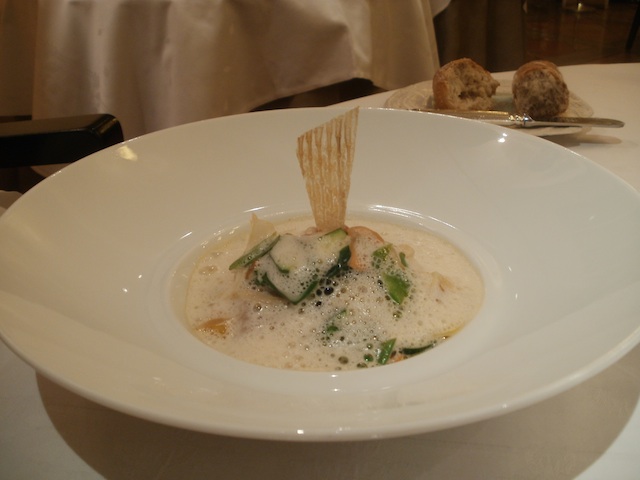 Astonishing.
Astonishing.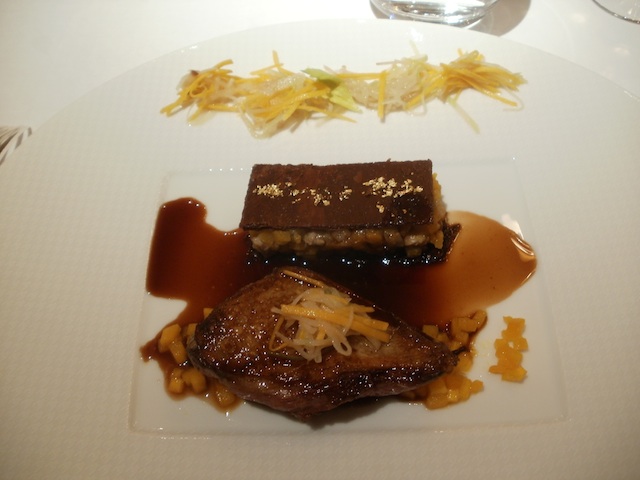 Masterful. Beaune Teurons 1er Cru Albert Morot 2009. Rare roasted pigeon breast with a cocoa mille-feulle filled with jerusalem artichoke and winter squash brunoise, chocolate infused sauce and a julienne of raw vegetables.
Masterful. Beaune Teurons 1er Cru Albert Morot 2009. Rare roasted pigeon breast with a cocoa mille-feulle filled with jerusalem artichoke and winter squash brunoise, chocolate infused sauce and a julienne of raw vegetables. 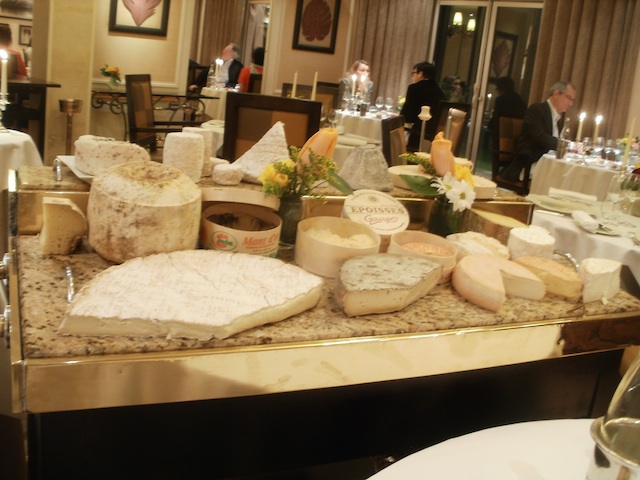 Stunning. The ginormous cheese trolley; I had fresh local goat, aged southwestern sheep cheese, 18 month old comté cheese and artisan Roquefort. Chateau Puech-Haut 2003 Saint-Drézéry.
Stunning. The ginormous cheese trolley; I had fresh local goat, aged southwestern sheep cheese, 18 month old comté cheese and artisan Roquefort. Chateau Puech-Haut 2003 Saint-Drézéry. 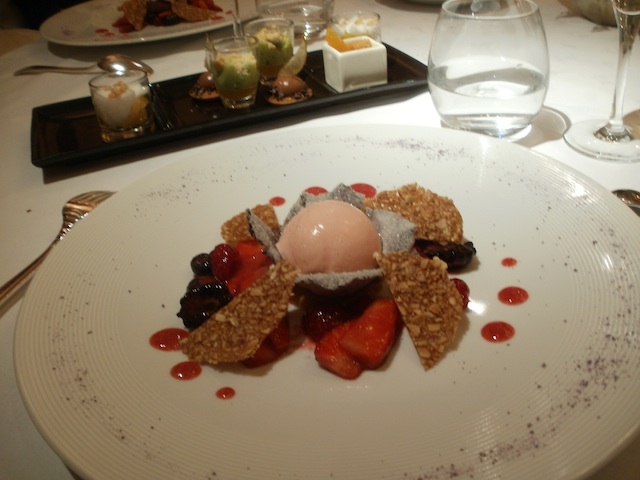 June sunshine, alien abduction. Delicate cup formed of large candied whole rose petals and almond brittle with a sphere of pale pink rose-infused ice cream. Candied rose petal crumbs and berries.
June sunshine, alien abduction. Delicate cup formed of large candied whole rose petals and almond brittle with a sphere of pale pink rose-infused ice cream. Candied rose petal crumbs and berries. 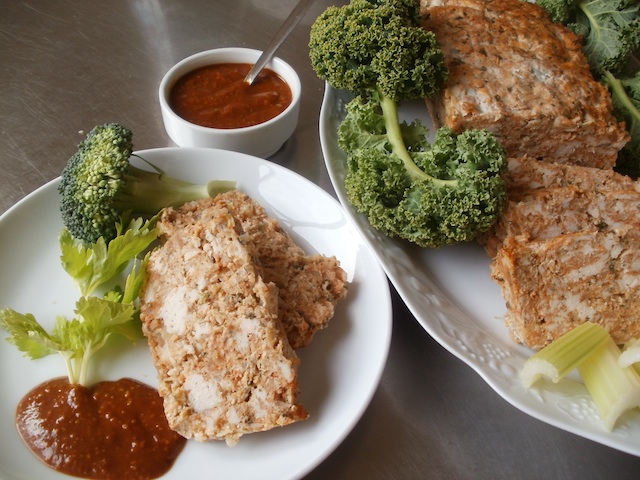
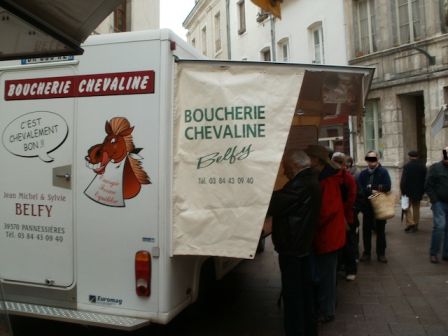
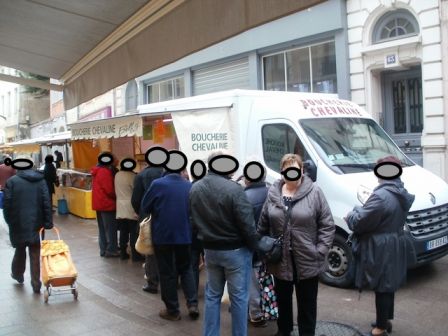

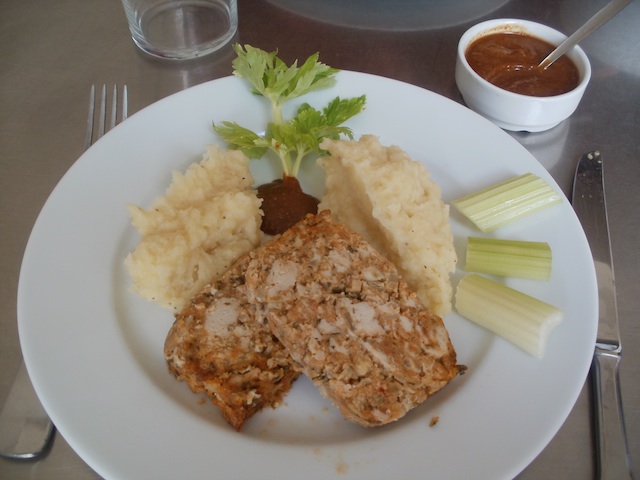
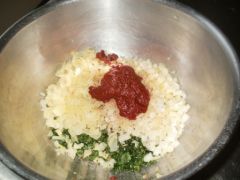

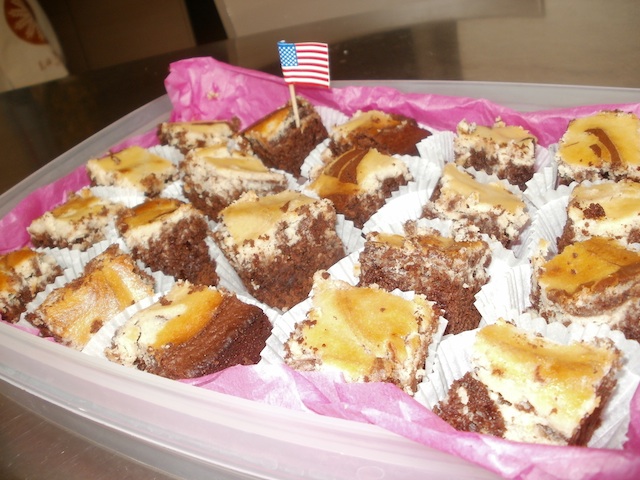 Last Thursday I attended a digital marketing seminar right here in Chalon, at
Last Thursday I attended a digital marketing seminar right here in Chalon, at 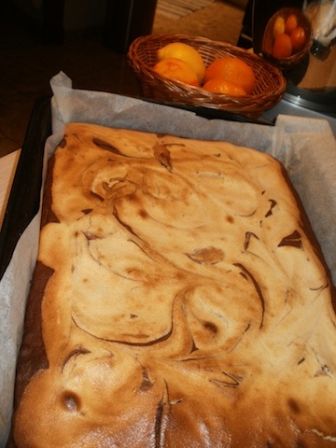
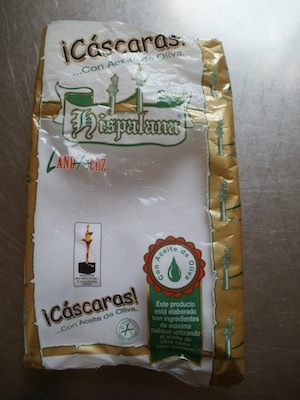
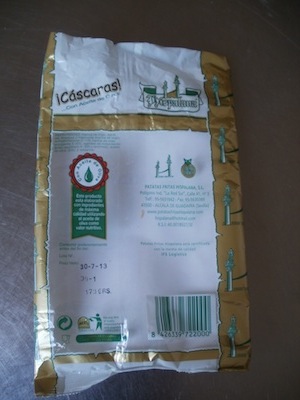
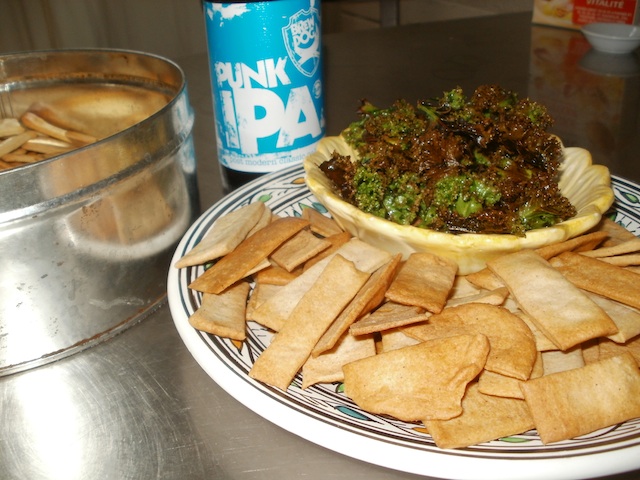 Brook's Tapas Crackers
Brook's Tapas Crackers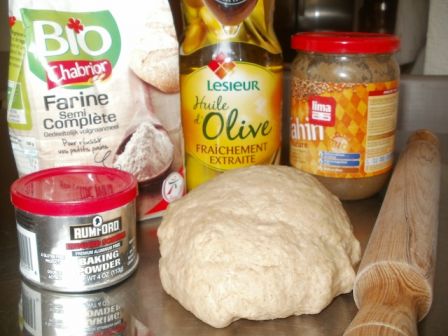
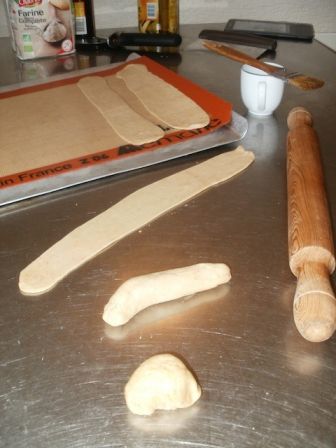
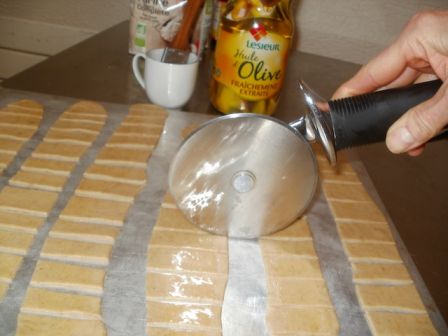

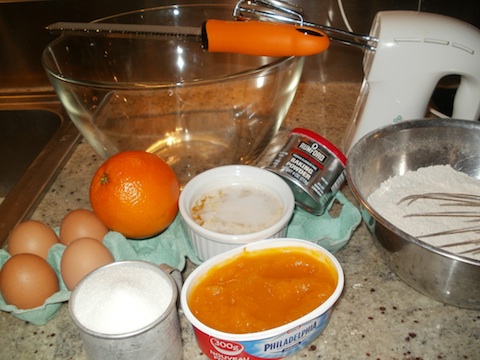

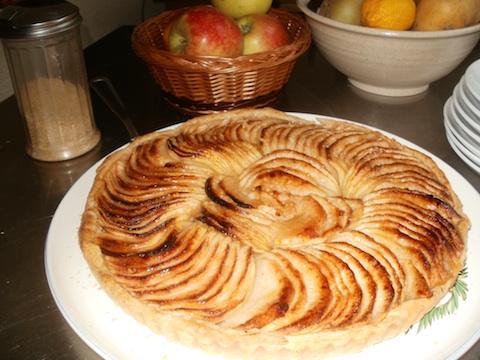
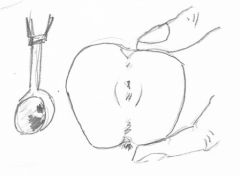
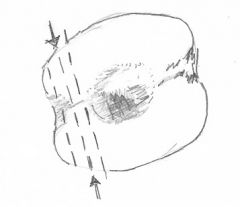
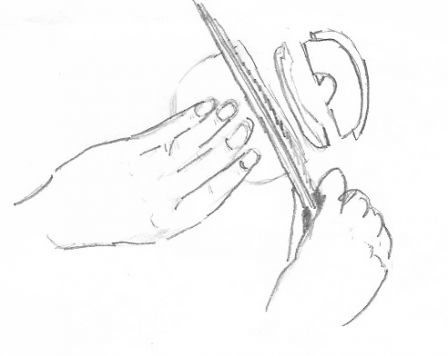
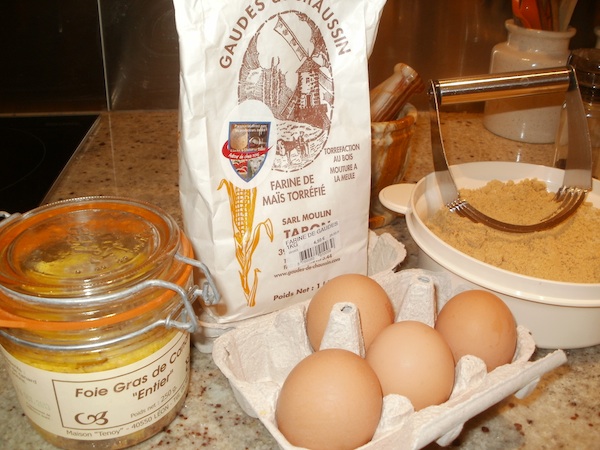
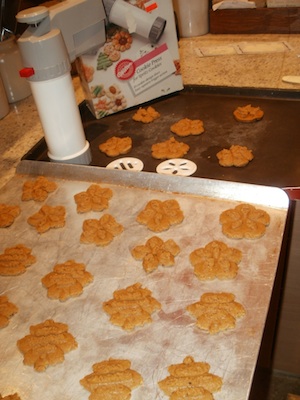
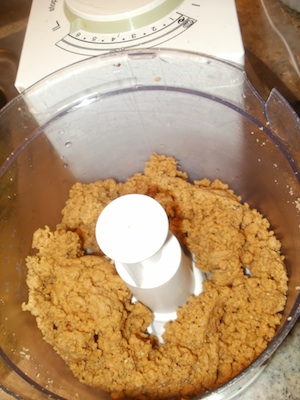
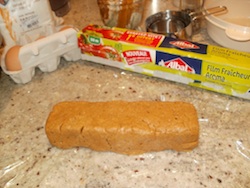
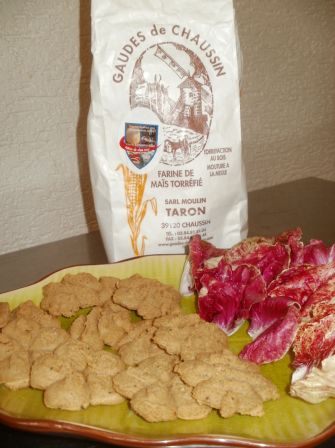


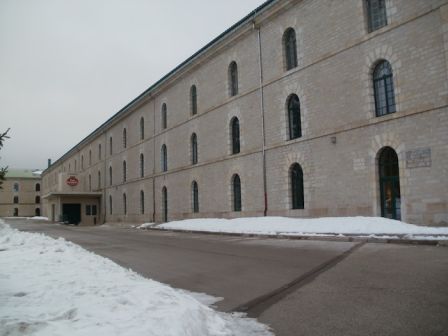 Charles Arnaud's crazy vision is reality 14 years later.
Charles Arnaud's crazy vision is reality 14 years later.  Now hundreds of tourists like me slip on blue plastic booties to explore the stone hallways buried under meters of stone and earth. The tour is like something from Dungeons & Dragons, and the treasure is golden cheese. The vast earthworks of the fort maintain a stable year round 7 degrees celsius temperature and the lovely arched vaults churn a slow, steady current of air, perfect for maturing Arnaud's Comté cheeses. The fort was designed to stand a year long siege, so there is plenty of water to maintain the requisite 97% humidity for the initial cheese ripening room. In all, there are three different cheese ripening rooms, each with unique temperature and humidity conditions that encourage the process of ripening Comté.
Now hundreds of tourists like me slip on blue plastic booties to explore the stone hallways buried under meters of stone and earth. The tour is like something from Dungeons & Dragons, and the treasure is golden cheese. The vast earthworks of the fort maintain a stable year round 7 degrees celsius temperature and the lovely arched vaults churn a slow, steady current of air, perfect for maturing Arnaud's Comté cheeses. The fort was designed to stand a year long siege, so there is plenty of water to maintain the requisite 97% humidity for the initial cheese ripening room. In all, there are three different cheese ripening rooms, each with unique temperature and humidity conditions that encourage the process of ripening Comté. 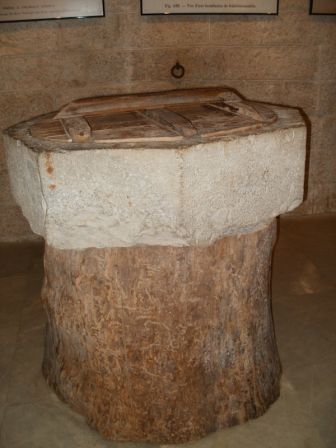 What looks like a wood-covered baptismal font on a stone pillar base is actually a cheese cellar used for storage before the invention of refrigeration. A cheese wagon in the center of the room has the sides of the barrels cut away to reveal cheese wheels between layers of wood and straw. Our tour guide gives us all the facts and figures in French, and answers all our questions. It's interesting and the guide is knowledgesable, but the tour remains a marketing tool for the Juraflore brand of Comté, representing only 10% of the total production of Comté cheese. There are are more than a dozen brands of comté. Our guide would have us believe Juraflore has the top quality, but I'm dubious. The Arnaud family makes some of their own cheese in Poligny, but the cheeses aging here come from over 32 different fruitières - the local name for cooperative dairies in the Jura where millk was collected and cheese made since the 13th century. The history of Jura
What looks like a wood-covered baptismal font on a stone pillar base is actually a cheese cellar used for storage before the invention of refrigeration. A cheese wagon in the center of the room has the sides of the barrels cut away to reveal cheese wheels between layers of wood and straw. Our tour guide gives us all the facts and figures in French, and answers all our questions. It's interesting and the guide is knowledgesable, but the tour remains a marketing tool for the Juraflore brand of Comté, representing only 10% of the total production of Comté cheese. There are are more than a dozen brands of comté. Our guide would have us believe Juraflore has the top quality, but I'm dubious. The Arnaud family makes some of their own cheese in Poligny, but the cheeses aging here come from over 32 different fruitières - the local name for cooperative dairies in the Jura where millk was collected and cheese made since the 13th century. The history of Jura 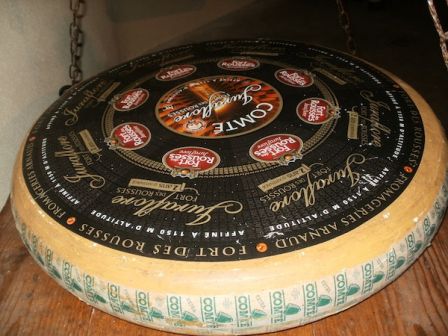 There are rows upon rows of cheeses here, stored on shelves from floor to ceiling. In the different ripening cellars the cheeses progress like candidates for Miss Universe, through a process of elimination where the best cheeses are selected for further maturation. The dungeon master, called an affineur (from the French "to make finer or better), wields his sonde, cheese probe, a metal tool with a sharp tip and hollow center he uses to extract a tiny core of cheese. The affineur uses all five senses to test and select the cheese. First he taps each disk a dozen times all over; the sound of the cheese gives information about texture and density. An extracted core is examined for color, and gently pinched and curved backwards to test viscosity and elasticity. Finally the core is sniffed and a fragment tasted before the core is stuck back into the cheese and tapped into place. The dungeon master has the final say, and scratches his initials on the side of the golden disk.
There are rows upon rows of cheeses here, stored on shelves from floor to ceiling. In the different ripening cellars the cheeses progress like candidates for Miss Universe, through a process of elimination where the best cheeses are selected for further maturation. The dungeon master, called an affineur (from the French "to make finer or better), wields his sonde, cheese probe, a metal tool with a sharp tip and hollow center he uses to extract a tiny core of cheese. The affineur uses all five senses to test and select the cheese. First he taps each disk a dozen times all over; the sound of the cheese gives information about texture and density. An extracted core is examined for color, and gently pinched and curved backwards to test viscosity and elasticity. Finally the core is sniffed and a fragment tasted before the core is stuck back into the cheese and tapped into place. The dungeon master has the final say, and scratches his initials on the side of the golden disk.
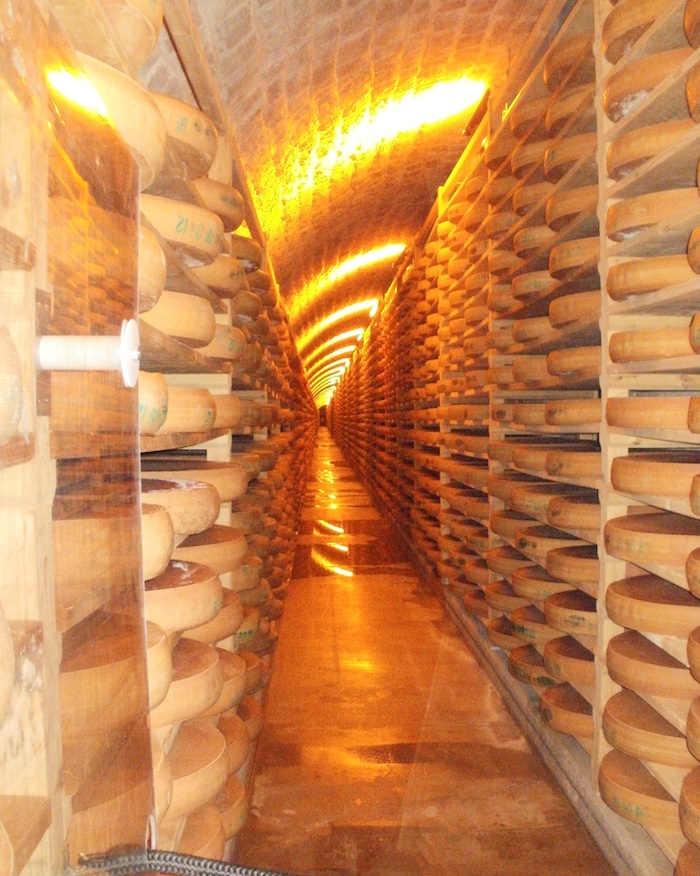
 I hope you had a wonderful Christmas. It's not my favorite holiday (that would be Easter) but it does feature time with friends, parties, and permission to enjoy sparkling wines and chocolate. If you're like me, you are feeling lazy yet have lots of entertaining, some of it casual drop in anytime! I like to have some emergency appetizers and treats on hand. Not everyone likes sweets, so when I spotted a pretty mix-in-a-jar of savoury vegetable cookies at the new Lux
I hope you had a wonderful Christmas. It's not my favorite holiday (that would be Easter) but it does feature time with friends, parties, and permission to enjoy sparkling wines and chocolate. If you're like me, you are feeling lazy yet have lots of entertaining, some of it casual drop in anytime! I like to have some emergency appetizers and treats on hand. Not everyone likes sweets, so when I spotted a pretty mix-in-a-jar of savoury vegetable cookies at the new Lux 

